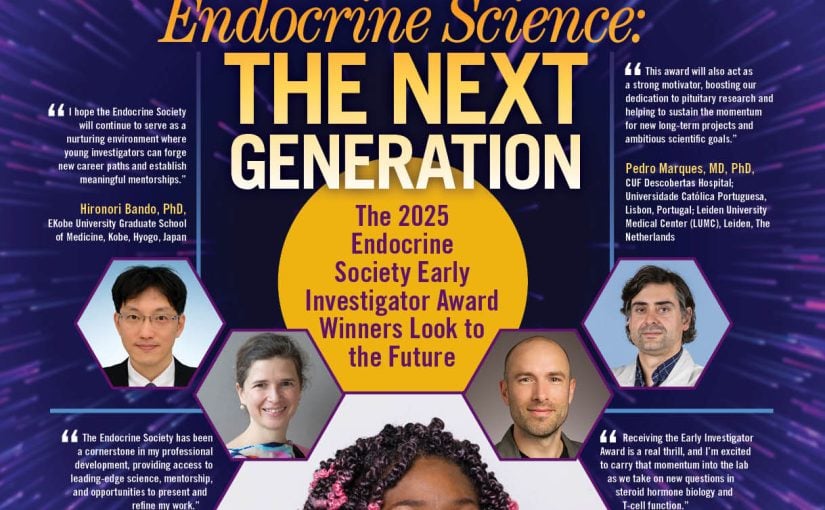
Each May in the U.S. is National Osteoporosis Awareness and Prevention Month which is observed to raise awareness about osteoporosis, promote prevention, and early detection. Bone health is one of the cornerstones of endocrine science and practice, so we felt that this was the perfect issue to take a look at some of the recent research focusing on bone health and potential treatment breakthroughs.
Endocrinologists are certainly on the front lines in terms of treatment since osteoporosis often develops without any obvious symptoms. Endocrinologists are the experts who are relied upon to discover often overlooked signs of bone loss as well as conduct research that leads to a better understanding of osteoporosis and other bone disorders. To that end, we’ve got a variety of research articles discussed as well as a look at a treatment method that is truly patient-centered.
Kelly Horvath tries her hand at “Taking the Skeletons Out of the Closet” where she examines three recent studies from the Endocrine Society’s Journal of Clinical Endocrinology & Metabolism that take a deep dive into research surrounding bone health complications. These papers looked at treatment options to increase bone density in breast cancer patients; the impact of sleeve gastrectomy procedures on bone mass in postmenopausal women; and the confounding increase in fragility fractures while osteoporosis appears to be underdiagnosed and thus undertreated.
From the Endocrine Society’s Bone and Mineral Special Interest Group, members Vafa Tabatabaie, MD, and Muriel Babey, MD, discuss the importance of “Fracture Liaison Services,” and how they can contribute to an improved quality of life for the patients as well as cost savings, and why the time to start one is now. To put it plainly, a Fracture Liaison Service – or FLS – is a “patient-centered, coordinated care model designed to identify, assess, and manage patients who have experienced a fragility fracture,” the authors explain, adding that among the benefits an FLS offers are “reducing the risk of future fractures and associated mortality, enhanced patient education and adherence to treatment, improved health and quality of life, increased healthcare efficiency, and impressive cost savings,” both for the patient and the caregiver.
A unique aspect of using an FLS is how it is tailor-made for each patient; there is no “typical” or “one-size-fits-all,” according to Tabatabaie, who says “Each institution has limitations and strengths; it is important for champions to start somewhere, stay pragmatic and flexible and modify their protocols as they go with the goal of capturing the patients at highest risk for recurrent fracture. FLS is a never-ending QI project.”
As part of our ongoing efforts to spotlight Endocrine Society Laureates, Glenda Fauntleroy Shaw talks to this year’s Outstanding Clinical Investigator Laureate JoAnn Manson, MD, DrPH, MACP, in “To Your ‘Healthspan.'” Manson discusses her ongoing research on menopausal estrogen therapy, the risks and benefits of nutritional supplements, her numerous large-scale prevention trials, and why she feels that the concept of a “healthspan” is more important than a lifespan, in which a care provider tries to “understand which interventions are most effective for maintenance of cardiometabolic health and prevention of cognitive decline, loss of mobility and physical function, and impaired quality of life,” she explains. “We’re interested in multi-omic predictors of biological aging and interventions that may be able to slow biological aging, such as measured by epigenetic and proteomic clocks, and to extend healthspan. This will include testing novel and repurposed medications for this indication.”
Next month, we take a look at what attendees can expect from ENDO 2025 in San Francisco, Calif., in July, so be sure to keep an eye out for the June issue! If you have any suggestions, questions, or comments, feel free to contact me at: [email protected].

